How to Hike the Kumano Kodo in Japan – Nakahechi Trail

Almost three years ago I hiked the Kumano Kodo trail, one of Japan’s holy pilgrimages and only one of two UNESCO recognized pilgrimages in the world. I wrote about my experience here, but I did not follow through on my promise to write a guide.
Three years ago it was extremely difficult for me to find a blog post that detailed an itinerary on how to do the most frequented trail (Nakahechi) on the Kumano Kodo. I spent hours researching and I guessed on so many items. Even with my Japanese skills, planning this trip was tough.
So, after THREE YEARS and lots of excuses, I’m finally writing up the guide on how to hike the Kumano Kodo, Nakahechi Trail, in Japan. Please note this guide is for the average tourist who wants to complete Kumano Kodo in about 3-4 days. If you’re a crazy backpacker/hiker who wants to go on insane off-road trails and spend a week in the mountains (which is very possible), this guide is not for you.
Pre-planning – The Basics
Pick your Trail: There are two main trails for Kumano Kodo: the Nakahechi and the Kohechi. Nakahechi is the “easier” route that starts on the western coast (in Kii-Tanabe) and ends on the eastern front. The Nakahechi takes about three days. Kohechi is the harder, less frequented trail that begins from Koya-san and goes up into the mountains of Kumano. Kohechi is the more hardcore and legitimate trail (as buddhist monks from Koya-san used this path to reach the holy site), but it’s much less maintained, takes more time, and is A LOT HARDER. As I did not do the Kohechi trail, I cannot offer advice on this path.

Bring a sturdy backpack for the journey, and ship the rest: Instead of hauling luggage around on a 3 day hike, I shipped it. I shipped three suitcases to the address of our hotel at the end of the Kumano Kodo journey in Kii-Katsura, which anyone can do at ANY convenience store for a very affordable price (I believe our 3 large suitcases were about $40 bucks total). Japanese shipping companies are reliable, timely and affordable. It may be difficult to ship luggage at the convenience store without knowing Japanese; if that’s the case, you can use the Kumano luggage shipping service. It’s a little pricier, but they drive your luggage to all your Kumano accommodations daily.
I suggest packing light for the actual hiking bit–you won’t need anything besides snacks, water, and a walking stick. It’s a tough hike, but you won’t need cooking gear or a tent.
Book your lodgings at least 1-2 months in advance: You can use the official Kumano website to book the minshuku (Japanese B&Bs) along the trail. The minshuku might seem pricey at first; but trust me, they are SO WORTH IT. Minshuku is the closest a tourist can get to homestaying with a Japanese family–it’s an authentic and local experience, with damn good food. Plus, aside from camping, it’s the only lodging option on the trail.
Bring Many Snacks: Kumano Kodo has 2-3 towns interspersed throughout the Nakahechi–and that’s it. As it is the middle of nowhere, food items are somewhat marked up as well. If I could redo the trail, I’d bring way more snacks from the larger city. Hiking (literally) all day can get tiring–don’t underestimate your hunger!
Cost: Honestly, I don’t remember how much this cost. There is no entrance fee to Kumano Kodo. Bus tickets are around $2 bucks one-way. The most expensive part of the trip will be the Minshuku, which run about $100/person per night. This may seem expensive, but it includes dinner & breakfast (and sometimes even an option for a lunch bento included).
Day 1: Arrival in Kii-Tanabe by train, Hiking Takajiri to Chikatsuyu
We took one of the earliest trains from Osaka into Kii-Tanabe (which takes about 2.5 hours) and we still didn’t arrive until 11am. I would suggest arriving earlier if possible, as we wasted a lot of daylight by arriving in Kii-Tanabe “late.”
Kii-Tanabe is the traveler’s starting point for Kumano Kodo–and it shows. Upon arrival you’ll see a tourist desk, brochures galore, and more. Check the bus timetable before arriving in Kii-Tanabe so that your train arrival time coincides with the bus departure time to Takajiri. The “official” trailhead starts at Takajiri; although due to our late start time, we got off at the stop immediately after Takajiri (which is not listed on the map). Confirm with the tourist desk at Kii-Tanabe about where to get off/on the bus to coordinate with your schedule.
Although Takajiri to Chikatsuyu looks like a quick hike on the map, and google maps will say it’s “only” 4.5 hours, it’s actually a 5-6 hour hike (don’t believe Google). PLAN ACCORDINGLY. In summer the sun sets in Japan around 6pm, and trust me, you don’t want to hike this in the dark.
Accommodation – Chikatsuyu B&B
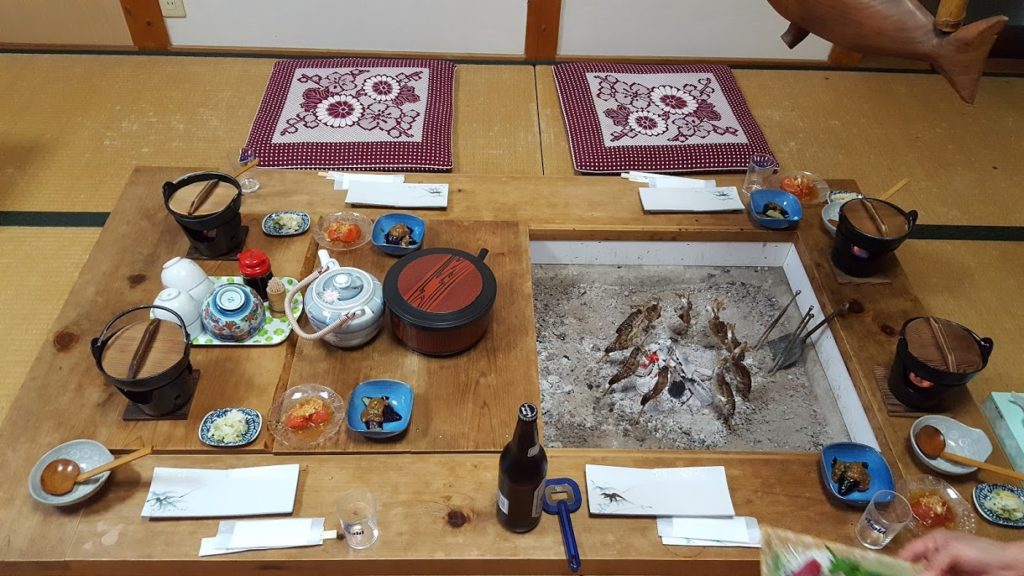
This place is awesome. An older couple runs it and, despite not speaking English, their customer base is 80% foreigners. You’ll sleep on the floor (tatami mats) and will use a shared bathroom, but everything is very clean and hygienic. The traditional wood stove in the living room is great, and they cook fresh fish and vegetables there and eat alongside you. Staying here was a wonderful experience and is forever seared into my memory.
Chikatsuyu has many b&bs, and honestly, you can’t go wrong–just book in advance!
Day 2: Chikatsuyu to Yunomine Onsen (hot spring)
Ok guys. This is the day. While the path is straightforward, you’re gonna walk hard and hike your heart out.
We left Chikatsuyu around 7am and we barely made it Yunomine Onsen just before sunset. Again, Google indicated that this should only take 5 hours, but it was very inaccurate–it’s more like 7-8 hrs of hiking. Rest well the night before, bring lots of snacks and a pack lunch, and get ready for some jaw-dropping views. Don’t worry about getting lost–the trail from Chikatsuyu to Yunomine is straightforward and there is plenty of signage.
The great part about Kumano Kodo is the amazing lodgings at the end of the road. When you arrive to Yunomine Onsen, you’ll step into one of the most quaint and charming locations of your life. This village looks like it was plucked out of a Japanese postcard.
And since you’re staying in a hot spring village, every hotel and b&b has a hot spring where you can soak your tired bones. After a long day’s hike, you deserve it!
Accommodation – Minshuku Yamane
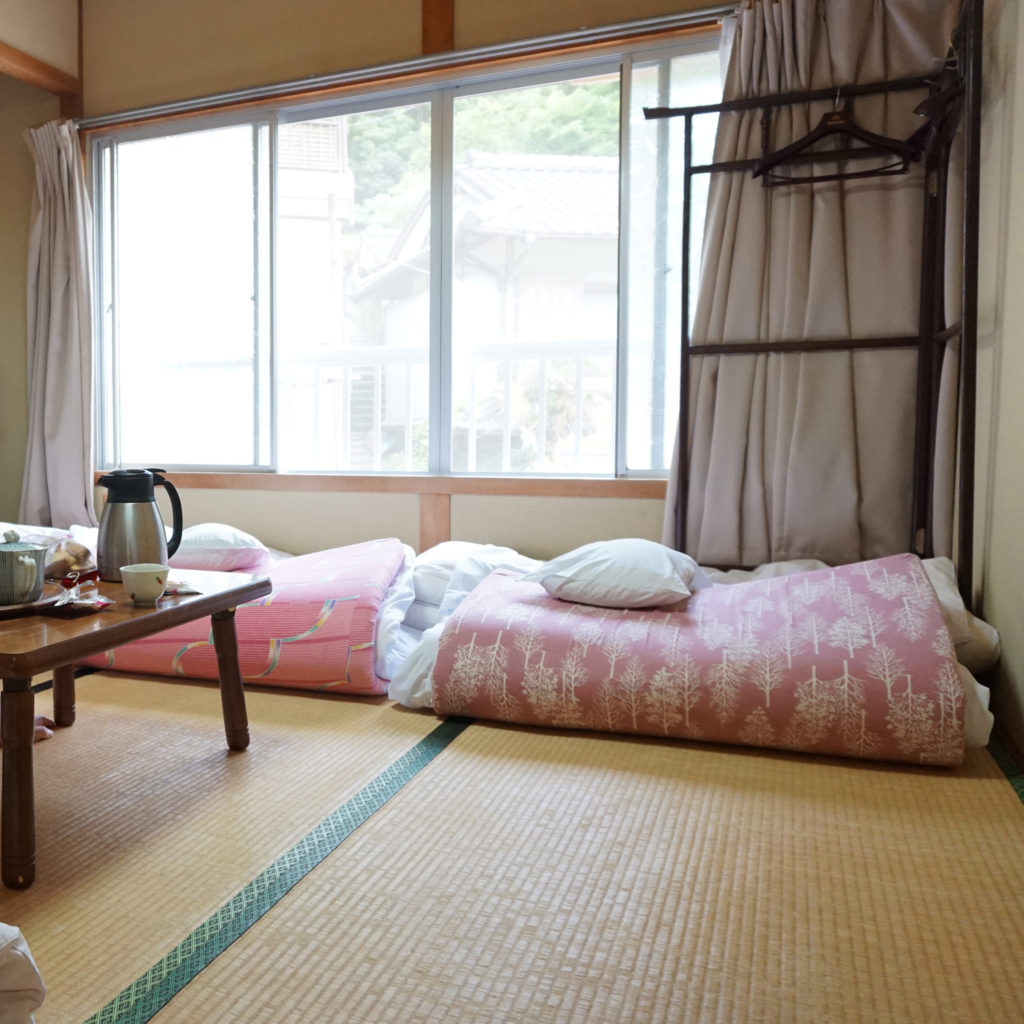
This older hotel is run by a boisterous and energetic woman who speaks a little English. Again, most of her customer base is English speaking so she’s had to adopt to the times, but she was very happy to find that I could speak Japanese (and even asked me to do some interpreting). While the hot spring here was not the best, it was good enough for me. The food, again, was phenomenal–locally sourced vegetables and fish alongside delicious sake and beer. The presentation on this meal was fantastic.
Again, you can’t go wrong in this onsen town when it comes to lodgings. Minshuku Yamane was actually not my first choice, but since it was so crowded I ended up here–so book early!
Day 3: Yunomine – Hongu – Shingu – Daimonzaka – Kii-Katsua
This day is a whip, so start your day early around 7-8am.
We left Yunomine Onsen to hike to Hongu–the “end” of the Kumano Kodo pilgrimage–which is about a 1-2 hour hike. After the previous day, this little stretch will feel like nothing at all. Once you get to Hongu, you can kiss the Torii gate that basically says “you’ve made it” in Japanese and pat yourself on the back.
As I mentioned in my reflections post, you have to go to the three holy Kumano “sanzan” shrines to get your “get out of hell free” card, so while the shrine in Hongu is nice–one aint enough. Throw your coin in the Hongu shrine offering, clap, and get outta there… cause you still have two more shrines to see today.
The next shrine is in Shingu and, instead of take a boring and lame bus there, I wanted to take a traditional boat tour from Hongu to Shingu. So I dragged my husband and in-laws on a boat that sails down the Kumano-river and swings by all the holy Shinto sights. The boat leaves daily at 10:00am and 14:30 respectively, so plan in advance (although private bookings can be done via phone/website). Also note, THIS BOAT TOUR IS IN JAPANESE. They may have English tours since my visit–but I’m not sure. If you want to skip this because of the language barrier, there are frequent buses from Hongu to Shingu. Up to you. (PS: our captain on the boat was 90 years old and had been giving tours for 20 years! he was so cute).
Following your boat tour, the tourist company will drive you via van to Shingu Shrine–the second stop on your get-out-of-hell-free card. After visiting the shrine and paying respects at Shingu, hop on a nearby bus to Daimonzaka to see Nachi–the final shrine (there are tourist desks at Shingu shrine, so if you can’t find the bus, fear not! Someone will help you).
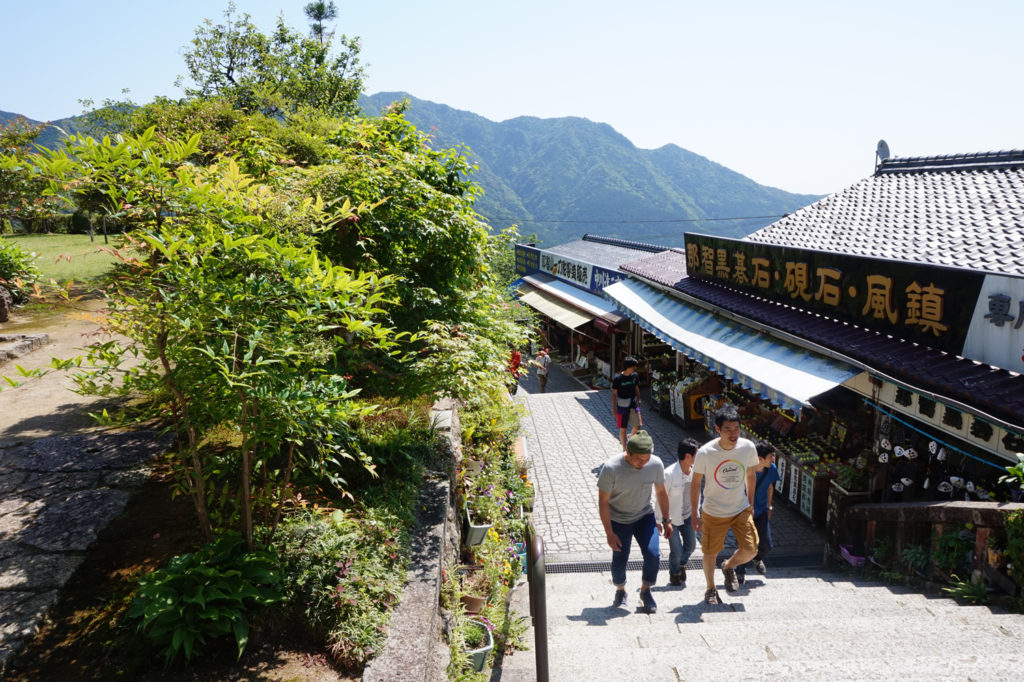
So the best is saved for last–because Nachi is mind bowing. Nachi shrine not only has a sprawling football field of gardens and various shrines, but it also has a waterfall and eternal flame! This place is GORGEOUS. Most Japanese tourists are too lazy to hike the Nakahechi trail and actually come straight here for the money shot–and it’s easy to see why. This spot alone is worth a day of travel.
And you’re done. You’ve seen the Kumano sanzan (three holy shrines). You hiked the Nakahechi. Give yourself a big, and I mean a BIG, pat on the back. If you’ve done everything right, you’re probably extremely exhausted at this point.
End the night in Kii-Katsua, a quick bus ride away from Daimonzaka (take the bus from Daimonzaka back to Shingu, and from Shingu to Kii-Katsura).
Accommodations – Oyada Hana Guest House
After splurging on all those minshuku on the Kumano Kodo trail, in Kii-Katsura I booked a more “hostel” like location to save on money. Despite Oyada being a hostel, our room was still private and spacious (large enough to lay out 4 futons with extra room). The bathroom is shared. This place doesn’t offer meals, but as Kii-Katsura is a proper town, there are many restaurants and onsen nearby to dine at.
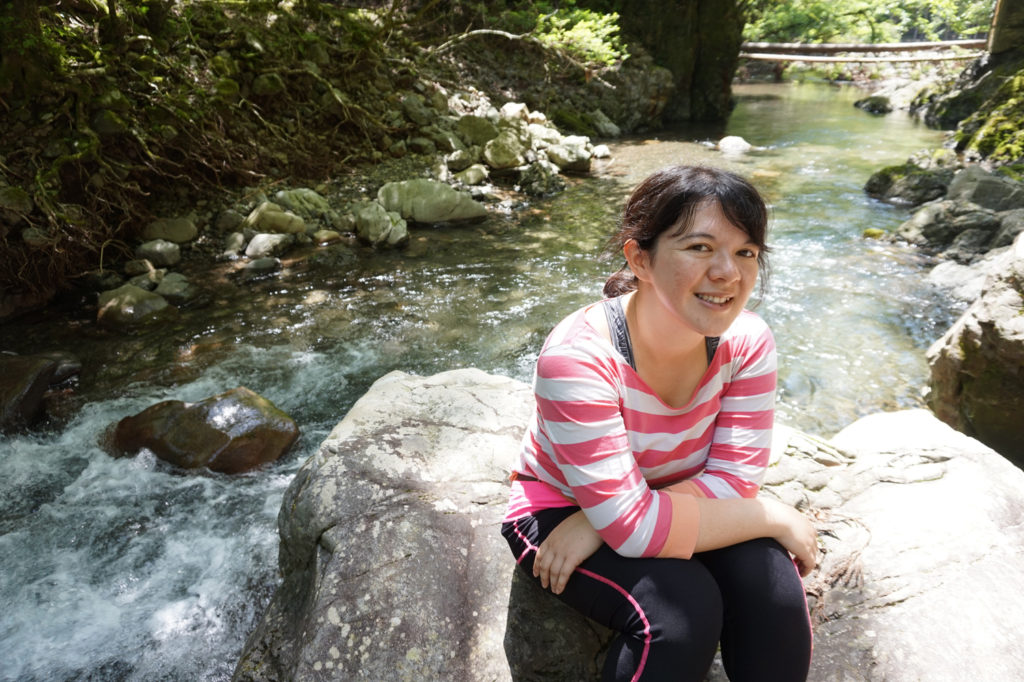
And with Kii-Katsura, your Kumano Kodo journey is over. The Nakahechi trail actually offers more layovers and village visits than the ones I listed above (see for yourself, so don’t feel obligated to copy my itinerary). However, for those looking to get the most out of their journey in a 3 day-4 night period–I must admit, my itinerary above did the trick.
In Summary
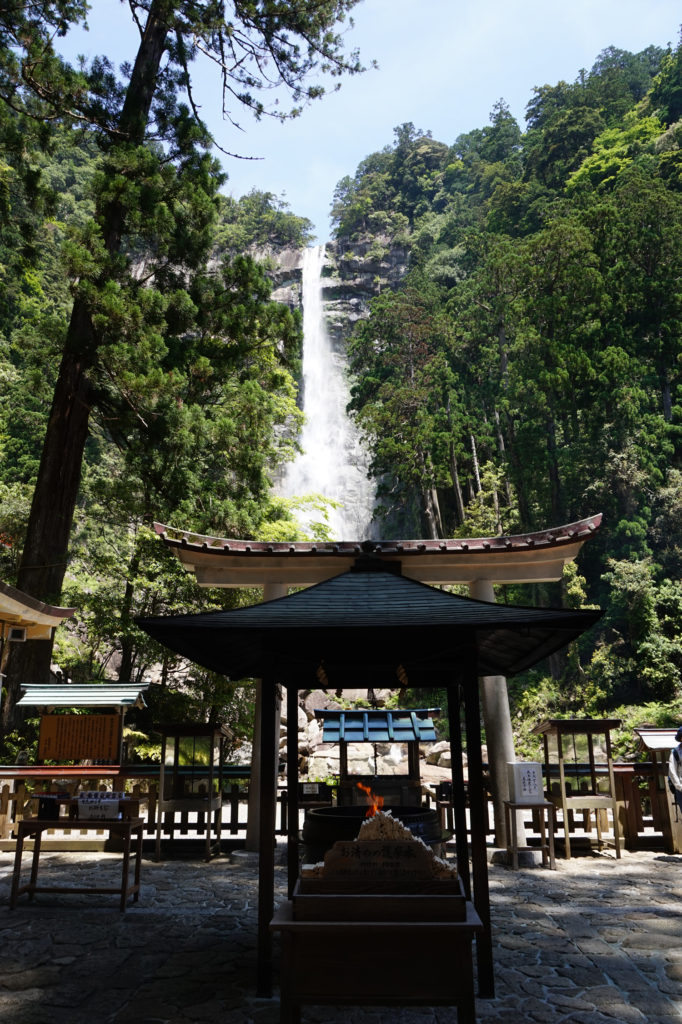
I studied and lived in Japan for about three years and have gone back to visit at least 10+ times since. To say I’ve seen a good chunk of the country is an understatement.
But I must admit, Kumano Kodo was my most memorable journey to Japan. As a former pilgrimage route, there is something… mystical about it. The emptiness on the trail. The endless sea of cedar trees. The interspersed shinto and jizo shrines along the path. The hidden villages in the mountains with minshuku and onsen. The grandeur of Nachi and its waterfall.
It was a mystical and healing experience. During this journey three years ago my life was undergoing a monumental shift. When I reached the first shrine at Hongu, I threw a coin in the offering box, clapped twice and bowed to the Shinto Gods. I prayed that I was doing the right thing. That my choices were not wrong. That I would fulfill my dreams.
I bought a red charm at that shrine with the black crow of Kumano Kodo. I latched that charm onto my backpack for graduate school and, whenever times were rough, I held it in my hand and told myself to be strong. Today, I use that same backpack for work and the Kumano Kodo charm is still safely attached. It’s been with me on countless flights and road trips. It’s a reminder of the special pilgrimage I took–and to never give up, and never waiver.
ONE FINAL AND NECESSARY PIECE OF ADVICE
I could not have done the Kumano Kodo without the official Kumano Kodo travel website. They will check your itinerary and let you know if your plan is feasible or not. They also help you book the Minshuku, as many of the owners cannot speak English.
This Kumano Kodo travel service was started by a former JET teacher from and, thanks to his efforts, this once hidden trail has become a hit for foreigners. The influx of foreign tourists has given business to many of the minshuku, restaurants and tourist facilities on the pilgrimage. Support the Kumano cause!
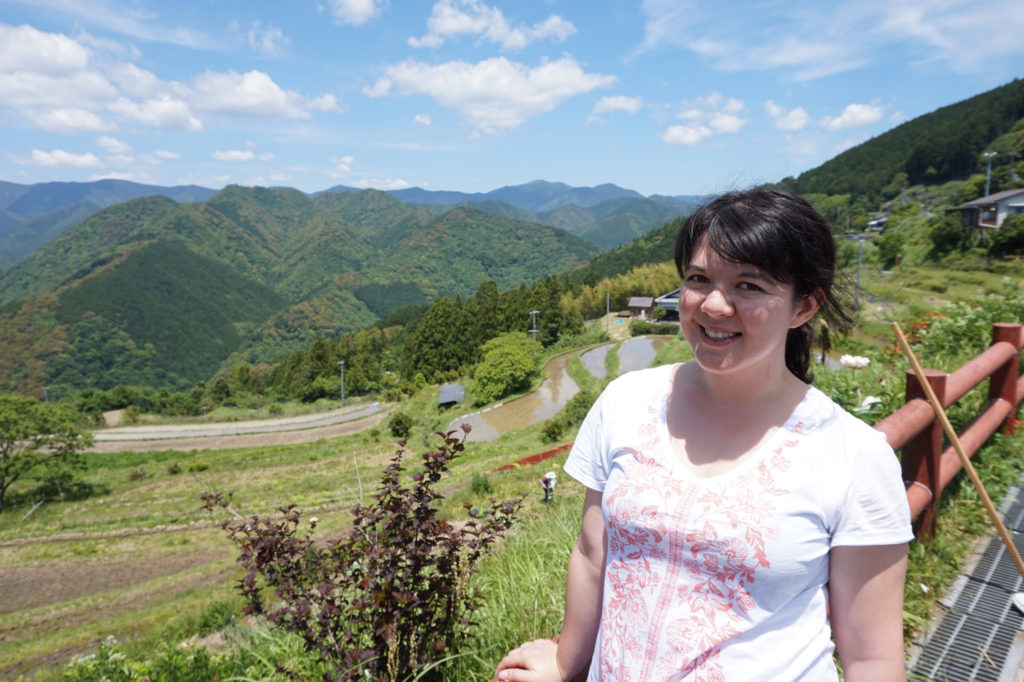
So what are you waiting for? Go on that pilgrimage!
10 thoughts on “How to Hike the Kumano Kodo in Japan – Nakahechi Trail”
Do people go in the fall? I would want to hike it with colorful foliage. (Well, by the time I get there, I probably won’t be able to hike at all, but let’s pretend I’m younger and my knees are in excellent shape.)
I think they do! I don’t think it’s the best for fall foliage, though, as most of the trees are cedar… Although I did see a few maple leaves in there.
But almost anywhere in Japan is gorgeous in the fall. Hope you and your husband have a chance to visit someday!
Yes! So glad you got around to doing this. I will definitely remember this hike. I miss good ‘ol hikes and this sounds epic. Plus, as you know, Japan is on the list. And this strikes me as a very unusual way to see it. Thanks, Mary.
Aw, thanks for the comment, Lani! I hope you can get to Japan soon. No matter where you go it’s magical!
Thank you so much for writing this up! It was super helpful. Is it possible to hike beyond Hongu or do you have to take a boat and bus to continue? I was hoping this would be at least 4-5 days of walking.
Also, what time of year did you book? I’ve just recently purchased a flight to Osaka for July and I’m hoping it will be a quieter time of year!
Thank you again for the great write up and excellent tips 🙂
Katie
Hi Katie! So glad this is helpful for you!
It is possible to hike beyond Hongu, but from the looks of the map, it will add another two days onto your journey (so it might be just what you’re looking for?). When you get to Hongu Taisha, you then have to hike to Koguchi, which is about 13km (or 8 miles)… the route for that hike is here. Then from Koguchi you’ll hike to Nachi-Taisha (where the big waterfall is), which is 14km (8-9miles), map here. So it is possible… you just have to make sure you have enough time to do it! You can see the entire map route here.
I must warn you that summers in Japan are really awful, and July especially so. Japan is extremely humid and you will sweat… be careful of heat exhaustion! Luckily the temperature is a little cooler in Kumano Kodo because it’s higher up in the mountains (and almost the entire path is shaded by a thick cover of trees). According to the Kumano website it’s 28C (or 76F) high for July, which is a bit cooler than the average for Osaka (87-88F).
Hope you have fun!!
These are excellent resources! Thank you! One more question – do you think I need to book the ryokans or minshukus in advance? Or is it possible to find a place to stay in the villages the afternoon of arriving?
I’m not *too* worried about the heat as Shanghai, where I live now, is pretty freaking hot too!
~K
Hey Katie! I would highly recommend booking in advance in rural places deep within Kumano Kodo, like Chikatsuyu and Yunomine Onsen. These are really tiny villages so there’s not a lot of options in terms of lodging (sometimes there’s only 5-6 minshuku in an entire town, and minshuku only have a handful of rooms to begin with). I booked a month or two in advance and was surprised to find that a lot of the minshuku were already full. Granted, I don’t know how busy July will be, but since Japan has become a super popular tourist destination in recent years I’d play it safe rather than sorry. The last thing you want to be is stranded in the middle of nowhere with no room!
The starting and ending towns (Kii-Tanabe and Kii-Katsura) are proper towns and will probably have a hotel/hostel available on arrival (although you may want to play it safe here and book in advance as well).
And wow, yeah, if you can survive a Shanghai summer then you’ll be fine in Japan, haha. Basically the same!
Thanks for all the detailed information. Saving this post for a future trip to Japan.
Yay! I hope you get to go to Kumano!